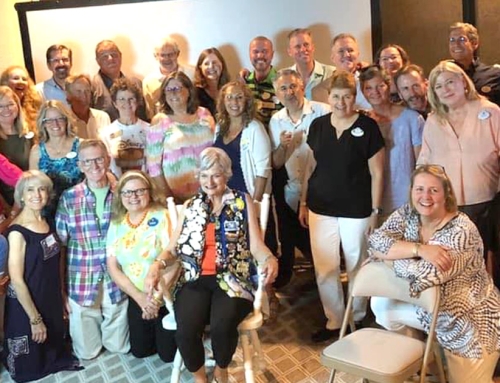 A few years ago, I called a senior level client and was surprised to hear her answer the call herself. Usually, her administrative assistant answered all calls. She later told me she had recently fired her assistant for being rude. It turns out that although this assistant was good at the technical aspects of her job, she was not so good at creating a friendly, warm environment. This was key in her role as she was the face (and voice) of the hospital for so many people.
A few years ago, I called a senior level client and was surprised to hear her answer the call herself. Usually, her administrative assistant answered all calls. She later told me she had recently fired her assistant for being rude. It turns out that although this assistant was good at the technical aspects of her job, she was not so good at creating a friendly, warm environment. This was key in her role as she was the face (and voice) of the hospital for so many people.
She was all business and no human.
Instead of warmly saying, how may I help you, she would quickly say, what do you need?
Instead of a smile and, I’ll let her know you’re here, she would point across the room and say, you can wait in the waiting area.
There were more examples, but you get the idea. I don’t think anyone really comes to work with the intention of alienating everyone else with their rude behavior. We should always try to assume positive intent. Which is why I believe employees like this are unconsciously incompetent – they don’t even realize they’re being rude.
The good news is employees like these are easy to spot. Even better, these employees can be the secret sauce for culture change.
Culture change happens in layers:
- First layer = Awareness. It’s as simple as asking the employee if they know they’re being rude? Do you know you’re being rude when people call the office? Do you know some people feel offended or put off by the way you answer and process phone calls? We don’t want to embarrass them, so certainly this would be a private conversation, but odds are, they have no idea how others perceive them! We can’t change what we don’t acknowledge – awareness is key.
- Second layer = Identify solutions. In our example of the administrative assistant, imagine how helpful a loose script would be? Not something verbatim to make her sound robotic. Just a few personalized greetings she could choose from to add a little human to her interactions with others. Years ago at Disney, every administrative professional had notepads with the message “Put A Smile In Your Voice” pre-printed at the top. This way, whenever they were working the phones and writing down messages, there was a subtle reminder that the people on the other end of the call could hear a smile in your voice and would have a more pleasant call experience. And for those Disney cast members that weren’t working the phones, there were mirrors, signs, and stickers at the entrances right before the cast member would “step on stage” into a guest area. The signs were a reminder to smile, check name tags, throw away any gum or food, adjust costumes if necessary, and prepare to move from the unseen backstage areas to the highly visible guest areas.
- Third layer = Mutual accountability. This is the most important one. As leaders, we often think about what we want our team to do and how we want them to perform. But the best leaders don’t just talk the talk – they walk the walk. In this situation, the leader could say to her assistant, our goal is to create a warm welcome for everyone. That includes patients, family members, clients, visitors, vendors, and one another. I’m not just asking you to say and do these things, I’m asking you to hold me accountable as well. Let me know if you see me skipping the human and going right to business. This way, we can work on holding one another accountable.
As leaders, there are tangible practical and easy ways we can demonstrate this in our daily work walk. Think about how you can add a little human (a personal warm touch) to the following to create a better experience:
- your email signature
- how you send emails (using our Human-Business-Human® tool)
- the way you answer the phone and transfer/hand off the call
- your voicemail message recording (for cell or office phone)
- the way you greet people in your office
- how you kick off and conduct meetings (again – by using the Human-Business-Human® tool)
- wear your name tag (let employees know why it’s important and why you wear yours. And insist that they call you out when you’re to wearing yours or if yours is flipped over, hard to read, etc.
- your face is a billboard for the entire organization – make sure it reflects the right things
There may be more than meets the eye when it comes to rude employees. They may be unconsciously incompetent. But with a little coaching and some tools and strategies in place to help guide them in their role, they can be the secrets to creating a world-class culture.






Leave A Comment